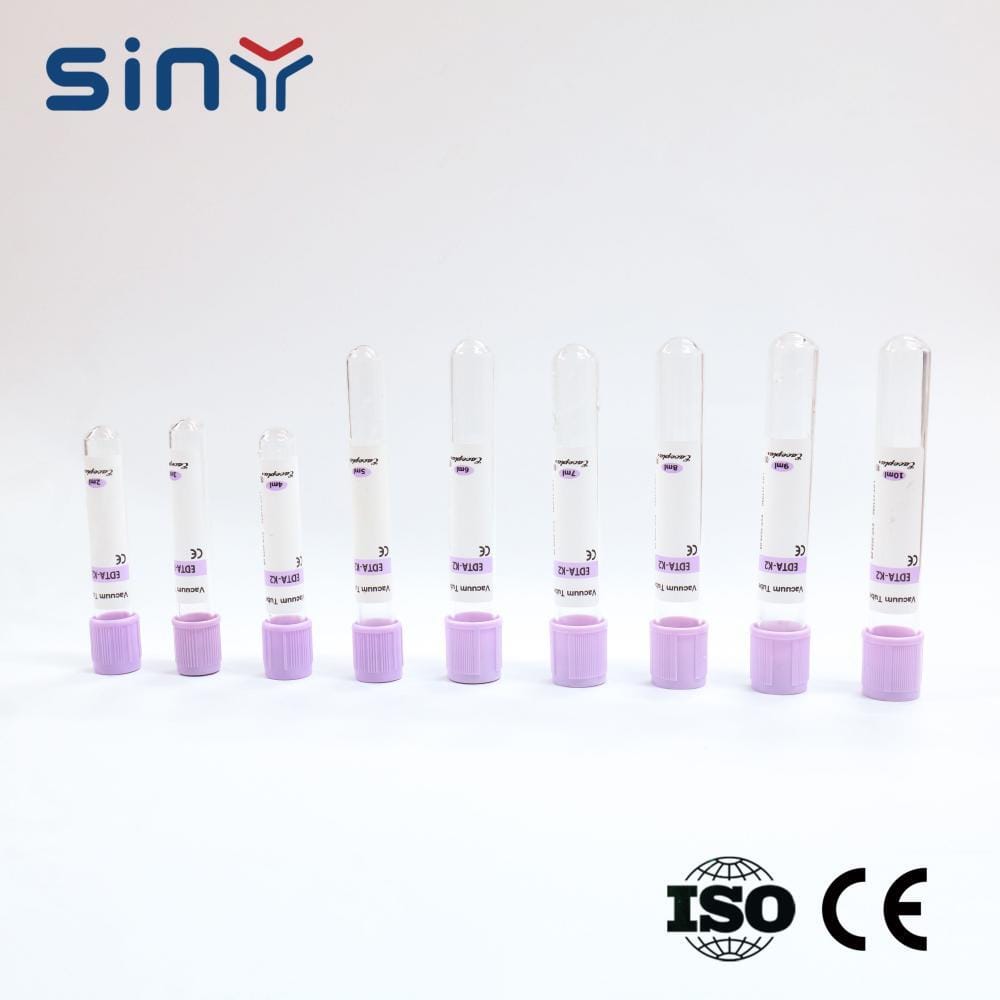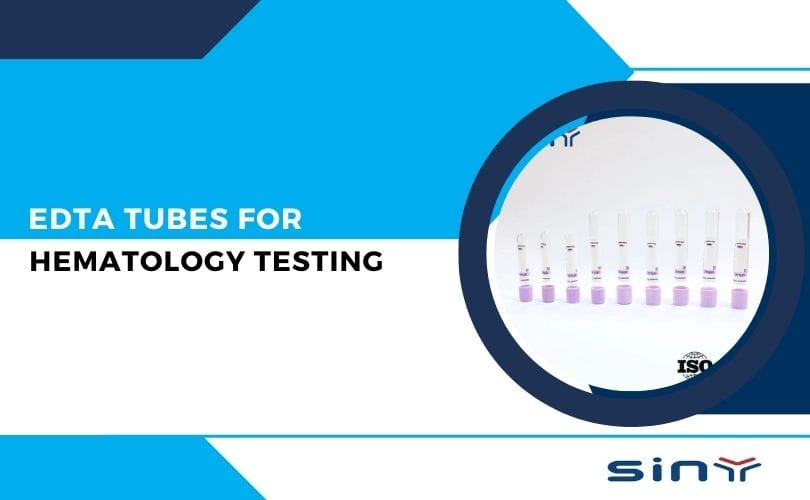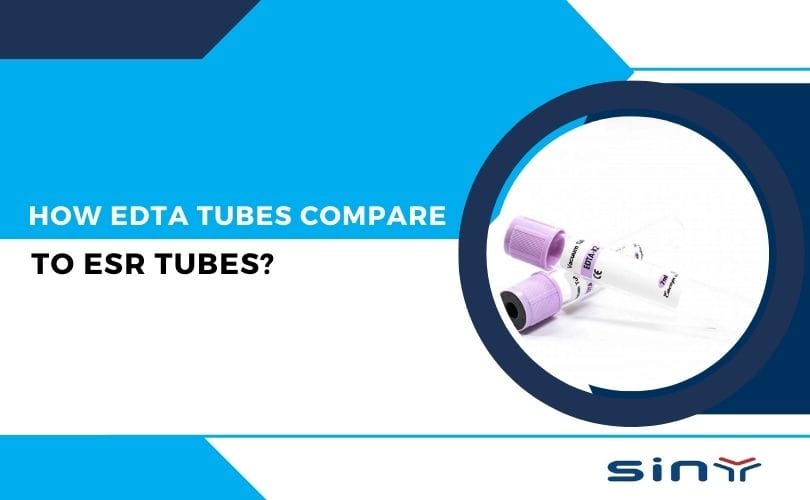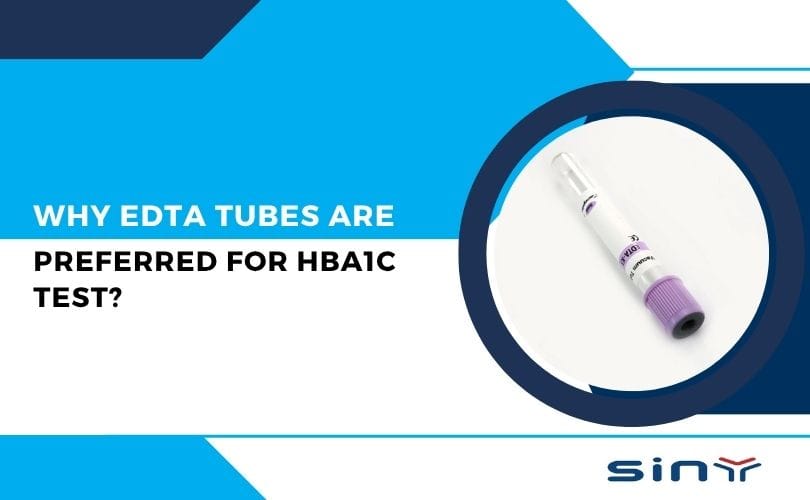Blood test begins with collection, and even the slightest error at this stage can distort results. That’s why choosing the right blood collection tube is critical. Different tests require different additives—some prevent clotting, others separate plasma, and some preserve DNA.
Among these, the K₂ EDTA Vacuum Blood Collection Tube has gained immense importance. It’s widely used in hematology and molecular biology because it keeps blood cells stable and prevents clotting. In fact, without it, many routine lab tests such as CBC, blood smears, or DNA analysis wouldn’t be possible.
What is a K₂ EDTA Vacuum Blood Collection Tube?
A K₂ EDTA Vacuum Blood Collection Tube is a specialized tube pre-coated with K₂ EDTA (dipotassium ethylenediaminetetraacetic acid), a strong anticoagulant. It binds calcium ions in the blood, which are essential for clotting. By doing this, it keeps the blood fluid and preserves the natural structure of cells.

These tubes are vacuum-sealed, which means they automatically draw the right amount of blood when a needle punctures the rubber stopper. The vacuum technology ensures:
Correct blood-to-additive ratio
Reduced handling errors
Faster, safer collection process
You can explore more about their manufacturing standards at EDTA Tube.
How Does a K₂ EDTA Tube Work in Blood Collection?
The magic lies in the K₂ EDTA anticoagulant. When blood enters the tube, EDTA quickly binds to calcium ions, stopping the clotting cascade. Unlike other anticoagulants such as heparin, EDTA doesn’t alter cell morphology, which makes it perfect for studying red blood cells, white blood cells, and platelets under a microscope.
Key Benefits of Using K₂ EDTA Tubes:
Maintains accurate cell counts for hematology tests
Preserves cell shape and size for microscopic evaluation
Prevents clotting without interfering with DNA or RNA integrity
That’s why these tubes are considered the gold standard for hematology and molecular biology testing.
Applications of K₂ EDTA Vacuum Blood Collection Tubes
K₂ EDTA tubes are used in a variety of medical and diagnostic applications, including:
- Complete Blood Count (CBC): This test measures the number of red blood cells, white blood cells, and platelets in the blood. K₂ EDTA tubes are the preferred choice for CBC tests because they preserve the morphology of blood cells.
- Blood Typing: K₂ EDTA tubes are used to collect blood samples for blood group and Rh factor determination.
- Molecular Diagnostics: These tubes are also used for genetic testing and other molecular diagnostic procedures that require high-quality DNA or RNA samples.
- Research and Clinical Trials: K₂ EDTA tubes are widely used in research studies and clinical trials to collect and store blood samples for analysis.
For more information on the applications of EDTA tubes, visit our EDTA Tubes for Blood Collection.
Advantages of Using K₂ EDTA Tubes
K₂ EDTA Vacuum Blood Collection Tubes offer several advantages over other blood collection methods:
- Prevents Clotting: The primary advantage of K₂ EDTA tubes is their ability to prevent blood clotting, ensuring accurate test results.
- Preserves Cell Morphology: K₂ EDTA maintains the shape and structure of blood cells, which is essential for hematology tests.
- Consistent Sample Volume: The vacuum system ensures that the correct volume of blood is collected, reducing the risk of errors.
- Wide Range of Applications: K₂ EDTA tubes are suitable for a variety of tests, making them a versatile tool in the laboratory.
- Ease of Use: The Vacutainer® system is user-friendly, allowing for quick and efficient blood collection.
For tips on ensuring quality control when using EDTA tubes, check out our Top Quality Control Tips for Using EDTA Tubes guide.
Comparison with Other Blood Collection Tubes
While K₂ EDTA tubes are widely used, it’s important to understand how they compare to other types of blood collection tubes. For example, ESR tubes are used specifically for erythrocyte sedimentation rate (ESR) tests, which measure the rate at which red blood cells settle in a tube. Unlike K₂ EDTA tubes, ESR tubes contain sodium citrate as an anticoagulant.
To learn more about the differences between EDTA tubes and ESR tubes, visit our How EDTA Tubes Compare to ESR Tubes page.
K₂ EDTA Tubes vs ESR Tubes
One common question is: how are EDTA tubes different from ESR (Erythrocyte Sedimentation Rate) tubes?
| Feature | K₂ EDTA Tubes | ESR Tubes |
|---|---|---|
| Additive | K₂ EDTA | Sodium Citrate |
| Primary Use | Hematology & Molecular Tests | Erythrocyte Sedimentation Rate test |
| Effect on Blood | Prevents clotting, preserves cell morphology | Slows clotting to allow sedimentation |
If you want a deeper dive, check this comparison: How EDTA Tubes Compare to ESR Tubes. For ESR products, check Siny Medical ESR Tubes and their product category.
Types & Sizes of K₂ EDTA Vacuum Blood Collection Tubes
K₂ EDTA tubes come in various volumes and designs to match different test requirements:
1 ml – 2 ml: For pediatric or small sample studies
3 ml – 5 ml: Most common size for routine hematology
7 ml – 10 ml: For molecular biology and special testing
They’re often color-coded (typically lavender or purple caps) for easy identification. Explore available options at EDTA Tube Product Category.
Quality Control in Using K₂ EDTA Tubes
Even the best tube won’t guarantee accuracy without proper handling. Laboratories follow strict quality control guidelines to minimize errors:
Store tubes at recommended temperatures
Avoid overfilling or underfilling (distorts blood-to-additive ratio)
Mix gently by inversion after collection—never shake
Prevent hemolysis by using correct venipuncture techniques
For labs looking to improve their results, here are some Top Quality Control Tips.
Global Standards & Manufacturers
The K₂ EDTA Vacuum Blood Collection Tube has become a global standard thanks to its reliability. Reputable manufacturers like EDTA Tube and Siny Medical ensure compliance with international medical standards.
For detailed product listings, check:
You can also learn through video resources at Siny Medical YouTube Channel or explore Made-in-China Medical Supplies.
Summary
K₂ EDTA Vacuum Blood Collection Tubes are an essential tool in modern medical diagnostics. Their ability to prevent clotting and preserve blood cell morphology makes them indispensable for a wide range of tests, from complete blood counts to molecular diagnostics. By understanding their applications, advantages, and proper handling techniques, healthcare professionals can ensure accurate and reliable test results.
For more information on K₂ EDTA tubes and other blood collection products, visit our EDTA Tube Product Category page.
FAQs
1. Is K₂ EDTA safe for blood collection?
Yes, it’s widely used in clinical labs worldwide. The anticoagulant doesn’t harm the blood sample and ensures accurate results.
2. Which tests require K₂ EDTA tubes?
Primarily hematology tests (like CBC), molecular diagnostics, and DNA/RNA studies.
3. Can K₂ EDTA affect test results?
If used correctly, no. However, using the wrong tube for the wrong test can alter results. For example, EDTA isn’t suitable for coagulation studies.
4. What color cap do EDTA tubes have?
They’re usually lavender or purple, making them easy to identify among other collection tubes.
5. Where can I buy quality EDTA tubes?
Check EDTA Tube for reliable supply and support.






